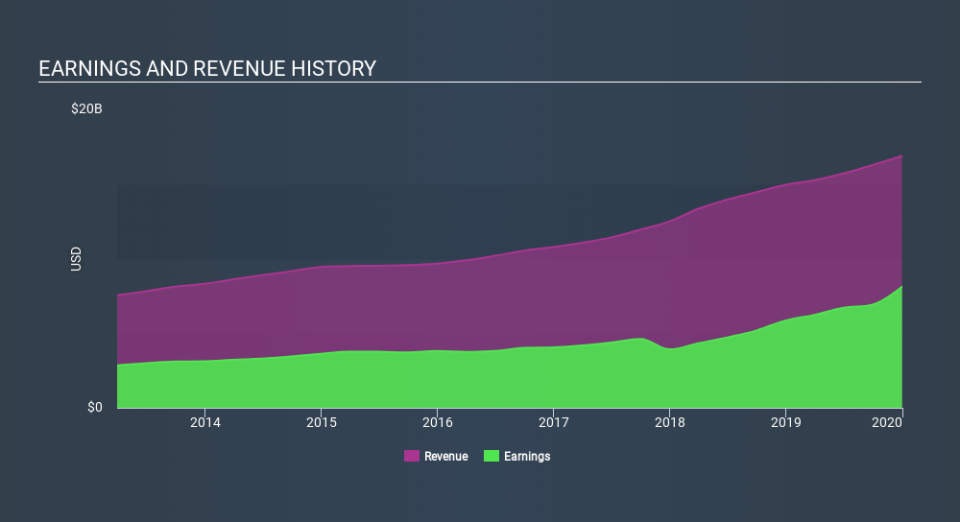How Does Mastercard Incorporated's (NYSE:MA) Earnings Growth Stack Up Against Industry Performance?

Measuring Mastercard Incorporated's (NYSE:MA) track record of past performance is an insightful exercise for investors. It enables us to reflect on whether the company has met or exceed expectations, which is a powerful signal for future performance. Below, I will assess MA's recent performance announced on 31 December 2019 and compare these figures to its historical trend and industry movements.
View our latest analysis for Mastercard
How MA fared against its long-term earnings performance and its industry
MA's trailing twelve-month earnings (from 31 December 2019) of US$8.1b has jumped 39% compared to the previous year.
Furthermore, this one-year growth rate has exceeded its 5-year annual growth average of 15%, indicating the rate at which MA is growing has accelerated. What's enabled this growth? Well, let’s take a look at if it is merely attributable to industry tailwinds, or if Mastercard has seen some company-specific growth.
In terms of returns from investment, Mastercard has invested its equity funds well leading to a 136% return on equity (ROE), above the sensible minimum of 20%. Furthermore, its return on assets (ROA) of 28% exceeds the US IT industry of 7.1%, indicating Mastercard has used its assets more efficiently. And finally, its return on capital (ROC), which also accounts for Mastercard’s debt level, has increased over the past 3 years from 51% to 56%.
What does this mean?
While past data is useful, it doesn’t tell the whole story. While Mastercard has a good historical track record with positive growth and profitability, there's no certainty that this will extrapolate into the future. I suggest you continue to research Mastercard to get a more holistic view of the stock by looking at:
Future Outlook: What are well-informed industry analysts predicting for MA’s future growth? Take a look at our free research report of analyst consensus for MA’s outlook.
Financial Health: Are MA’s operations financially sustainable? Balance sheets can be hard to analyze, which is why we’ve done it for you. Check out our financial health checks here.
Other High-Performing Stocks: Are there other stocks that provide better prospects with proven track records? Explore our free list of these great stocks here.
NB: Figures in this article are calculated using data from the trailing twelve months from 31 December 2019. This may not be consistent with full year annual report figures.
If you spot an error that warrants correction, please contact the editor at editorial-team@simplywallst.com. This article by Simply Wall St is general in nature. It does not constitute a recommendation to buy or sell any stock, and does not take account of your objectives, or your financial situation. Simply Wall St has no position in the stocks mentioned.
We aim to bring you long-term focused research analysis driven by fundamental data. Note that our analysis may not factor in the latest price-sensitive company announcements or qualitative material. Thank you for reading.

 Yahoo Finance
Yahoo Finance 
